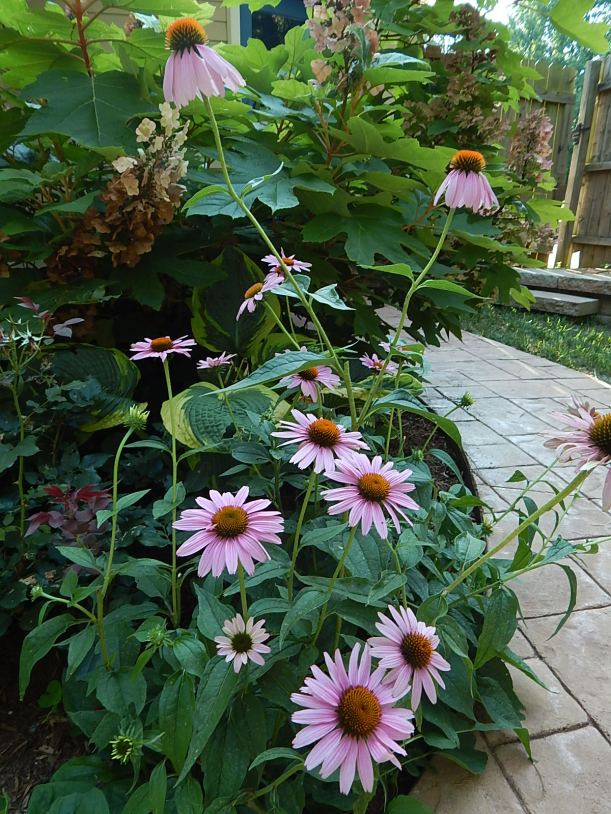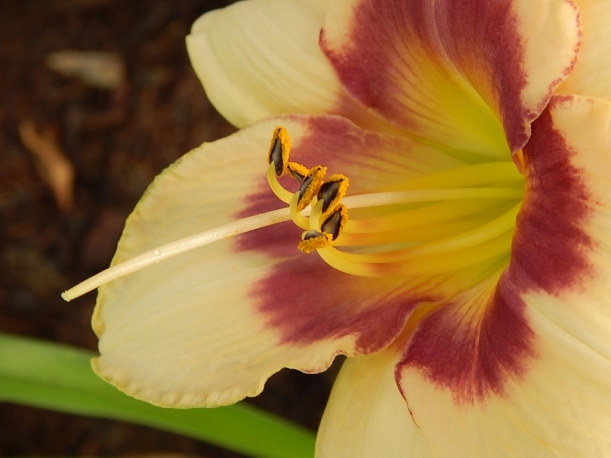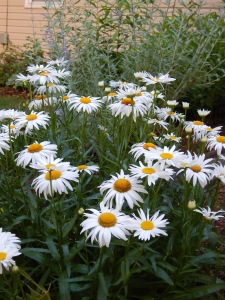Tag Archives: black-eye susan
Upside/Downside in the Garden This Week
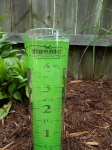 I don’t need my new rain gauge to tell me we’ve had a lot of rain in St. Louis. The “tap” has been running since last Sunday, and this morning the rain gauge was filled to the brim, indicating we’ve had nearly six inches of rain. Needless to say, all this moisture has had upsides and some downsides. Without further adieu, here’s a quick recap of my Arch City garden:
I don’t need my new rain gauge to tell me we’ve had a lot of rain in St. Louis. The “tap” has been running since last Sunday, and this morning the rain gauge was filled to the brim, indicating we’ve had nearly six inches of rain. Needless to say, all this moisture has had upsides and some downsides. Without further adieu, here’s a quick recap of my Arch City garden:
I was gone for the first part of the week so the upside is I did not need to water; the downside is ponding in parts of the yard, plants soaked to the bone and weeds, weeds, weeds. It finally stopped raining today and I spent an enjoyable few hours this morning tidying things up. You can translate that to mean trimming back spent blooms from the penstemon, lilies, lady’s mantle and roses, as well as the annuals. I have noticed lots of spots and white stuff on some of the plants, including the penstemon, echinacea and rudbeckia, so I cut back quite a bit. The roses have been food for some insect and now are displaying lacy leaves. Not a good sign.
By noon the sun was out in full force, the humidity unbearable and yours truly headed back inside.
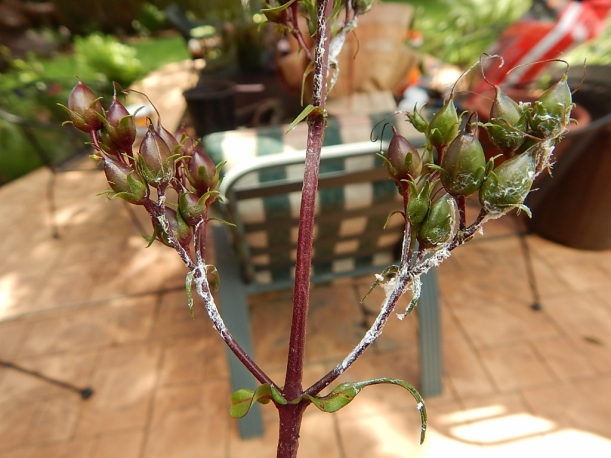
 There are some bright spots to the garden as well. The daylilies my neighbor generously gave me last summer are starting to bloom and they are lovely, although the liriope nearby have been heartily munched upon (I suspect rabbits) and the more than one dozen tomatoes on my patio plant are g-o-n-e. That would be squirrels. In fact, they left half-eaten tomatoes scattered upon the lawn. Ingrates.
There are some bright spots to the garden as well. The daylilies my neighbor generously gave me last summer are starting to bloom and they are lovely, although the liriope nearby have been heartily munched upon (I suspect rabbits) and the more than one dozen tomatoes on my patio plant are g-o-n-e. That would be squirrels. In fact, they left half-eaten tomatoes scattered upon the lawn. Ingrates.
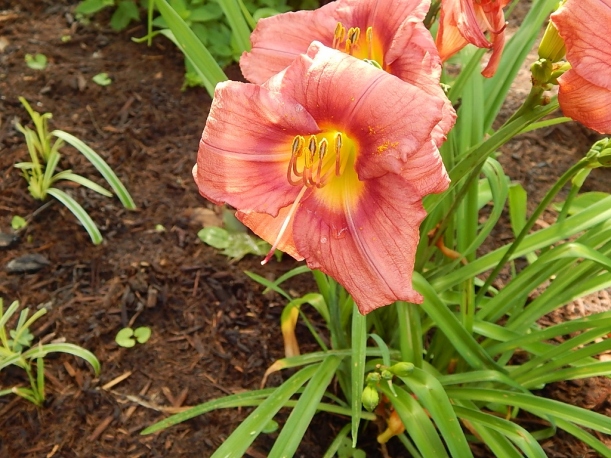
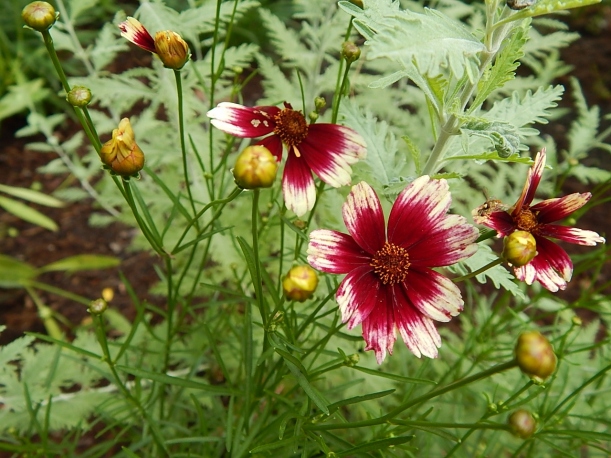 The “Berry Chiffon” tickseed I planted before I left for the Fling has begun to bloom and is quite showy with deep pink petals whose tips appear to be painted white. Yet some of the liatris nearby has been trampled just as it is beginning to bloom. It is now cut back and in a vase in the family room.
The “Berry Chiffon” tickseed I planted before I left for the Fling has begun to bloom and is quite showy with deep pink petals whose tips appear to be painted white. Yet some of the liatris nearby has been trampled just as it is beginning to bloom. It is now cut back and in a vase in the family room.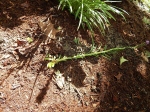
The astilbe in the newly installed south bed were stunning and I could not be happier with the plants in this shady part of the yard–fern, Japanese forest grass, hosta, Solomon seal, coral bells. As the raspberry plumes on the astilbe begin to fade, the caladium are starting to emerge, although some critter seems to have had a nibble or two on them as well. Rabbits? I suspect so but am not sure. I’ve never grown caladium in the ground. Readers, any tips for critter control?
The true test of the garden will be when the heat really kicks up. I guess that test will be tomorrow, as we expect temperatures in the mid 90s.
Some Like It Hot
In celebration of week-long temperatures above 90 degrees F., here’s a short list of plants that are sumptuous in a St. Louis swelter:
1. Echinacea purpurea. Like black-eye Susan, coneflower is a hardy soul. And breeders have developed an assortment of colors for us choosy gardeners. This year I added a very pretty pink variety called “PowWow Wild Berry.”
2. Gaillardia “Arizona Red Shades.” New to the garden this season, this blanket flower seems very happy and has put out bloom after bloom. It is a short, compact plant that rewards with blooms all season long–from early summer to early fall. And talk about carefee. It performs best in poor, well drained soil (check!), without fertilizer (check!) and in the sun (check!).
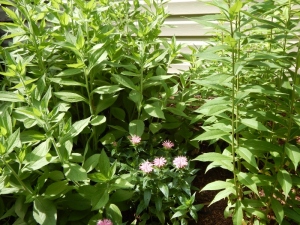
The young beebalm “Pardon My Pink” is dwarfed by black-eyed Susan on the left and tall garden phlox on the right.
3. Rudbeckia “Black-eye Susan.” I have divided the two plants I purchased three years ago at the Webster Groves Women’s Garden Club plant sale and increased the stands of “Susans” in the yard. This is one tough native that likes it hot and loves, loves, loves the sun. Not yet blooming, I look forward to vases full of these sunny flowers.

A nice color combination of yellow coreopsis and orange butterfly milkweed. Growing behind the milkweed is canna, a new addition this year to the fence garden bed.
4. Butterfly milkweed. Another native, the orange blooms on this plant attract butterflies, which are fun to watch flit about the garden. I have it placed next to coreopsis and in front of canna (new to the garden this year).
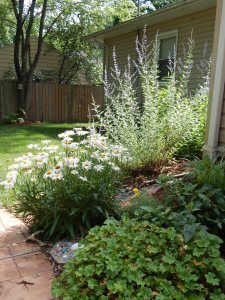
The Russian sage nearly glows in the afternoon sun. And the Shasta daisy seems to be well adapted to this spot which receives lots of sun.
5. Perovskia atriplicifolia.The wispy, powdery-hued wands of Russian sage cool off the heat but hold up well. The tall Russian sage is on the verge of blooming. The specimen shown above anchors the corner of this bed which faces South and East. The East view is what is showing here. Planted nearby are tall garden phlox and hot pink roses.
The Garden in Late May
At the end of April, I posted photos showing how much progress had been made from the start of the month to the beginning of May. Of course, Mother Nature was just getting tuned up. To lean on the old, tired adage “April Showers Bring May Flowers,” I know why Mother’s day, weddings and graduations fill the weekends of May–because it’s so doggone beautiful.
I have not yet mulched. Shame on me but my gutter man has not shown up! And while I know the mulch will make the beds look that much better and be beneficial to the beds, all the rain and nice spring temperatures have really brought on the blooms. The only bed that really looks shabby is along the fence line where the Cannas are starting to emerge. It could use some mulch. And the bed in the corner of the backyard looks terrible, but more about that deliberately neglected space later.
This post isn’t to dive into the rough spots of the yard, but to celebrate how lovely May is.
Let’s take a look at how things are coming along, shall we?
Not shy on ambition, I envisioned a plant-packed bed, spilling forth with flowers throughout spring, summer and fall when I started this project three years ago. And it is taking a lot longer than I thought. I am trying to be patient and let the shrubs fill in, the Japanese maple put some height on and the dwarf Colorado blue spruce fill out, but I am like a kid–I want it now. May was spent dividing hosta, coreopsis, shasta daisy, black eye Susan and other perennials in the beds. They payback is that I save money on plants and have some much-needed repetition, which provides some continuity to this project.
The “May Night” salvia are attracting lots of bees as are the cranesbill. I really like this combination. This must be the perfect spot for the cranesbill because it was the first thing I planted in my new garden in the summer of 2011. The salvia tends to get a bit leggy and last year–its first summer–I cut it back quite a bit. Clearly that didn’t both it!
Pink and purple plants took center stage in early May but now the yellows are starting to show. The coreopsis are balancing atop their delicate stems, and the stella de oro are blooming. Later this summer, the black eye Susans will be out in force.

This variety of coreopsis blooms all summer but requires a bit of maintenance trimming off the spent blooms.
I have been looking forward to watching gayfeather (liatris spicata) come through this year. I planted three of them last year. One did not make it but these two look terrific. It looks like they will bloom soon.
True to their promise, the Knockout roses are providing a profusion of blooms. I am really enjoying this pink shrub. It was mislabeled as a deep pink but it turns out it was a happy accident. It’s also encouraging to see how quickly these guys grow.
Nothing seems to have grown as quickly as the Oakleaf hydrangea! This bad boy either a) loves this spot on the north side of the house; b) is a vigorous grower; or c) all of the above. I think the answer is c) all of the above. This specimen is actually in the middle of this particular bed. When sitting on the patio, it towers above the rose. Behind it, where there is more shade from the eaves of the roofline, I have put in shade lovers such as coral bells, astilbe, hosta and fern. Originally, I had intended the oakleaf to screen the trash cans. This year I decided to move them to the other side of the house and expand this bed. That’s the gardening way, right?
Until May, I had not given much thought on which month I really enjoy in the yard. While early spring provides much-needed anticipation and relief from being inside all winter, the temperatures this May have been good (not too hot or humid). The humidity and temps are starting to climb but it has been a great month to enjoy the yard.
Having something blooming each month throughout the summer is one of the key benefits to gardening. You can bring the outdoors inside with vases of cut flowers, a joyful reminder of the garderner’s hard work paying off.
I like to I look forward to providing an end-of-June report and watching what’s growing in your yard, fellow bloggers.
Thanks for reading.

The black eye Susan here in front of the yellow coreopsis, love this location. Other sun lovers include monarda, tall garden phlox, lily and Russian sage. On the left is a blue false indigo (baptisia australis), a new addition to the bed this year.
Attack of the Killer Sweet-Gum
I’m lucky. I don’t really suffer too terribly from seasonal allergies. I notice the car or patio table lightly dusted in a shade of green, but really haven’t given it much thought. There is something in the air in July that makes my nose itch like the dickens but besides that, I really don’t have any problems. And, really, I have not been all that sympathetic to those who do suffer. My daughters will testify to that.
Until now. Wow.
Take a look at the pollen in my yard and on the patio. I came home from work yesterday and–as is my evening habit–went outside to survey the garden beds. Are the astilbe, hosta, heuchera and black eyed Susans I transplanted over the weekend holding up under the nearly 90 degree heat? Are the new ferns I planted adapting to their place beneath the tree? But wait, before I could even begin to answer these compelling questions, I was stopped dead in my tracks by the plethora—and I do mean plethora—of Christmas-tree shaped pollen grains from my neighbor’s sweet-gum (Liquidambar) tree littering my lawn and patio.
 Those who know and love me know that I am not a fan of the sweet-gum tree. And Arch City is full of them. The sweet-gum is the tree of choice in my neighborhood. No doubt a builder’s special in the 1950s because they are everywhere in my mid-century-built subdivision. In fact, my backyard neighbors’ has a towering sweet-gum in their yard right next to a 100-foot sycamore. A sweet-gum will grow up to 100 feet and by the looks of it, my neighbor’s tree has accomplished this height. By the way, both trees drop fruit, a spikey gumball in the case of the sweet-gum and one-inch balls in the case of the sycamore.
Those who know and love me know that I am not a fan of the sweet-gum tree. And Arch City is full of them. The sweet-gum is the tree of choice in my neighborhood. No doubt a builder’s special in the 1950s because they are everywhere in my mid-century-built subdivision. In fact, my backyard neighbors’ has a towering sweet-gum in their yard right next to a 100-foot sycamore. A sweet-gum will grow up to 100 feet and by the looks of it, my neighbor’s tree has accomplished this height. By the way, both trees drop fruit, a spikey gumball in the case of the sweet-gum and one-inch balls in the case of the sycamore.

Sweet-gum trees abound in my neighborhood. This one towers over my yard. At maturity, they can be 100 feet tall. I think this one is mature.
I commenced sweeping the Christmas tree pollens up from the patio. And as I did, they began to break down and the patio looked as if it were littered with yeast. I decided to do a little research and visited pollenlibrary.com (who knew?) where they describe this yard menace as a mild allergenic.
To add insult to injury, the two smallish maples in my yard and in the yard of my neighbor to the south, have released a profusion—and I do mean profusion—of winged beans. I know you know what I’m talking about. Don’t ask me what kind of maple these are, because I have no idea. And these winged beans are a moderate allergen.
The forecasters warned that we would have a robust pollen season. Clearly they had this forecast spot on. Now that I’m becoming more sensitive to my friends and family with allergies, I can’t help but think I might have the sniffles. Oh, and a little cough too.
How’s your spring shaping up?







